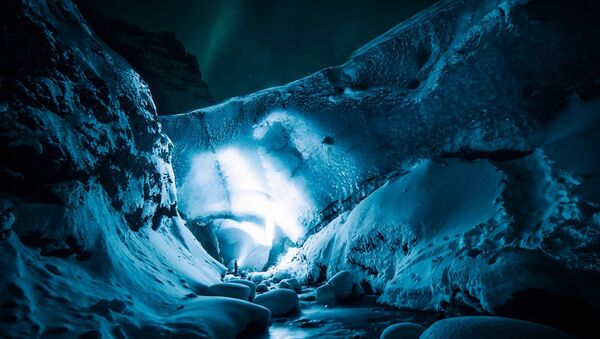The Cavernicole Cave in Pius XII Park in Montreal is well-known and well-visited by tourists, and until recently it was believed to be rather small. But in October, cave explorers Luc Le Blanc and Daniel Caron stumbled upon a great cavern that had eluded people for centuries.
What the two found behind a layer of decomposed limestone was a huge dark void that required them to come back with a ladder, and, later, and inflatable canoe.
New network of caves found in Montreal's St. Léonard cave system
— Karen P. Graham (@karengraham2009) 5 декабря 2017 г.
Read more: https://t.co/9RiabUl8s7 pic.twitter.com/fW1rNfzGi7
The void has a nearly 20-foot high ceiling and a surreal, perfectly vertical wall, as if made by human hands. Yet the explorers are quite sure no one has ever visited this space before.
"They built the street over the cave and they never found the cave," François Gelinas, the director of Quebec's speleological society, told The Canadian Press.
The walls fit into each other perfectly like pieces of a puzzle, the cavers say. This is because the walls were not eroded by water, but rather pushed apart by a glacier that moved through Canada during the last Ice Age.
"The formation itself, of this cave, is pretty special," said Le Blanc. "The walls just opened through the pressure of the glacier above about 15,000 years ago or perhaps more," he said. "It's a mechanical process through a glacier, it's been called glacial tectonism."
The cave is so deep it reaches the aquifer, CBC reports — that's what the canoe was for. Yet still, even after the cavers went 200 meters into the cave, it just keeps going.
Montreal explorers discover Ice Age-era cave under the city: https://t.co/BlaXFxSaHH pic.twitter.com/TUsBJ4I5cq
— CTV Edmonton (@ctvedmonton) 2 декабря 2017 г.
"It's the kind of discovery you make once in a lifetime," said Le Blanc in an interview with the BBC. Finding a cave that big that has never been visited by human, "normally you have to go to the moon to find that kind of thing," he said.
The newly found cave will now be fenced off for a while. According to the head of the Quebec Speleology Society, work must be done to protect visitors from the cave — and the cave from the visitors. The cave is decorated with stalactites and stalagmites, which take hundreds of years to grow, but which are also a favorite souvenir among tourists.
Discovered in 1812, Cavernicole Cave saw use as weapons storage during the rebellion of 1837, according to MTK Blog, but in the 20th century it was closed as a safety hazard, eventually being secured and reopened to the public in 1978.


